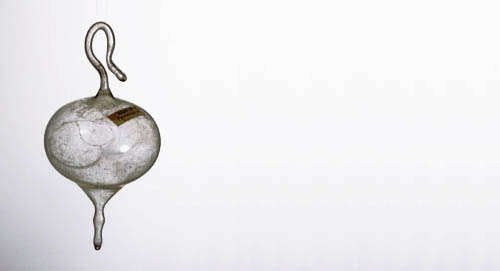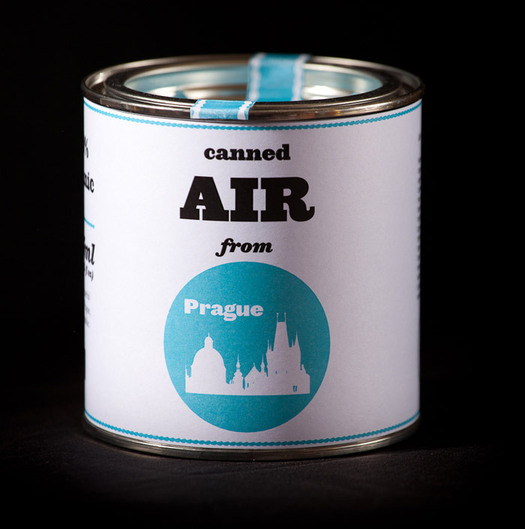There’s something in the air – and it’s the air!
Can it (like water) be commodified, or at least physically and/or intellectually packaged in some manner that gives it measurable monetary value? The answer would seem to be yes. Just recently, for instance, someone evidently committed to pay $10,000 in support of a Kickstarter project, in exchange for “Fresh Air,” by Praxis:
This is a unique piece, only this one is for sale. The air you are purchasing is like buying an endless tank of oxygen. No matter where you are, you always have the ability to take a breath of the most delicious, clean-smelling air that the earth can produce.
“The Museum of Non-Visible Art” that this Kickstarter campaign supports has gotten some attention, at least partly because James Franco is involved. But it interested me because it’s only been a month or two since I’d read a column by Dan Ariely in the May 2011 Harvard Business Review, provocatively titled “The Upside of Useless Stuff.” In it, Ariely basically argued that “getting people to want things they don’t really need may be far more valuable to society than we think.” And to make his point, he offered up a hypothetical product: “beautiful bottles of air.” Naturally this would be branded air – with a fancy name, Respirer (“ress-pire-AY — it’s French!” he clarifies), backed by an ad campaign celebrating its purity, plus endorsements from the likes of Kate Winslet. “Respirer would be a runaway hit,” Ariely wrote.
Coincidentally, BLDG BLOG had a highly interesting post not long after that, inspired by a trial in Florida where a “can of air” has become a piece of evidence. From this I learned that Marchel Duchamp once exhibited a small glass ampoule as a readymade titled 50 cc of Paris Air. The object is now in the collection of the Philadelphia Museum of Art, which reports that Duchamp “purchased this ‘empty’ ampoule from a pharmacist in Paris as a souvenir,” in 1919 – and adds that the thing was broken in 1949, “thus begging the question: Is the air [in the repaired version] even from Paris anymore?”

50 cc of Paris Air, Marcel Duchamp
Note that Duchamp nods in the general direction of intrinsic properties of the item for sale, by specificying "Paris" air. But even that nod falls well short of the sales pitch offered by the "oxygen bars" that popped up a few years back, offering what sounded like air of quasi-narcotic quality. So far as I know, that "trend" never got any further than the usual Style Sections, possibly because it leaned too heavily on the promise of a tangible payoff. But it was fun to read about.
Anyway, all this thinking on the subject of adding value to air reminded me that earlier this year The Dieline presented images of prettily packaged “Canned Air From Prague,” spelling out the precise breakdown of the air-collection points, and promising the “product is 100% organic.” It turned out to be an April Fool’s joke.

Canned Air From Prague, The Dieline
I thought I’d come across Canned Air from Prague on a different blog, box vox, and while searching there I encountered yet another variation on this subject: packaged and branded bad air. Specifically: “Genuine Los Angeles Smog” (which box vox proprieter Randy Ludacer noted, back in 2009, in connection with “Canned Radiation” from Three Mile Island, and the packaging of the “gag gift”).
Finally, just now, while putting this post together, I discovered that BLDG BLOG has also touched on the idea of selling bad air in the past, picking up on a comment by Alexis Madrigal a while back suggesting the creation of “Chinese air bars” (a perverse twist on the "oxygen bar" fad) so that “people around the world can temporarily experience what it's like to breathe the polluted city air of China,” BLDG BLOG summarized. “China, home to some of the most polluted cities in the world, could thus capitalize on its newest export: vials of urban atmosphere.”

Genuine Los Angeles Smog, spotted for sale on eBay by box vox
Clearly what all this suggests is that there is room for differentiation in the air category, which naturally brings us back to Ariely’s conjectural product Respirer. His HBR column suggested (not quite seriously, but not quite not) that branded air could motivate economic productivity: “Multiply the desire for Respirer by thousands of products of varying levels of utility: iPads, leather couches, crystal martini glasses, cars, garden gnomes.” When we talk about the evolution of capitalism, he concluded, “let’s not discount the role of aspiration and the desire for incremental luxuries – things we want but don’t necessarily need.”
Ariely, a psychology professor at Duke who is perhaps best known as the author of Predictably Irrational and The Upside of Irrationality, happens to be one of the more creative designers of behavioral-economics experiments, and I’ve admired his research in that field for years. In fact, back in 2008, I did a small project with some students at SCAD in which I used consumer-behavior research findings as inspiration for T-shirt notions, which the students conceptualized and illustrated. One of these came straight from Ariely’s work: In an excellent exploration of the placebo effect, he and his research colleagues found that a completely fictional painkiller they called Veladone (which was actually just vitamin C) was far more effect at $2.50 a pill than at 10 cents a pill. And so Angie Moramarco dreamed up a Veladone-RX logo; the T sold nicely, as I recall.

Veladone-RX logo by Angie Moramarco
I am now sorely tempted to revive this old project in order to promote the imaginary Respirer brand. The T-shirts this time would of course have to be more expensive, given the luxury positioning. But as incentive, each would be packed in envelope just roomy enough to contain, yes, a little bit of air: Call it a sample of Respirer, that most rarified air, available to any paying customer, for an additional charge of nothing at all.
